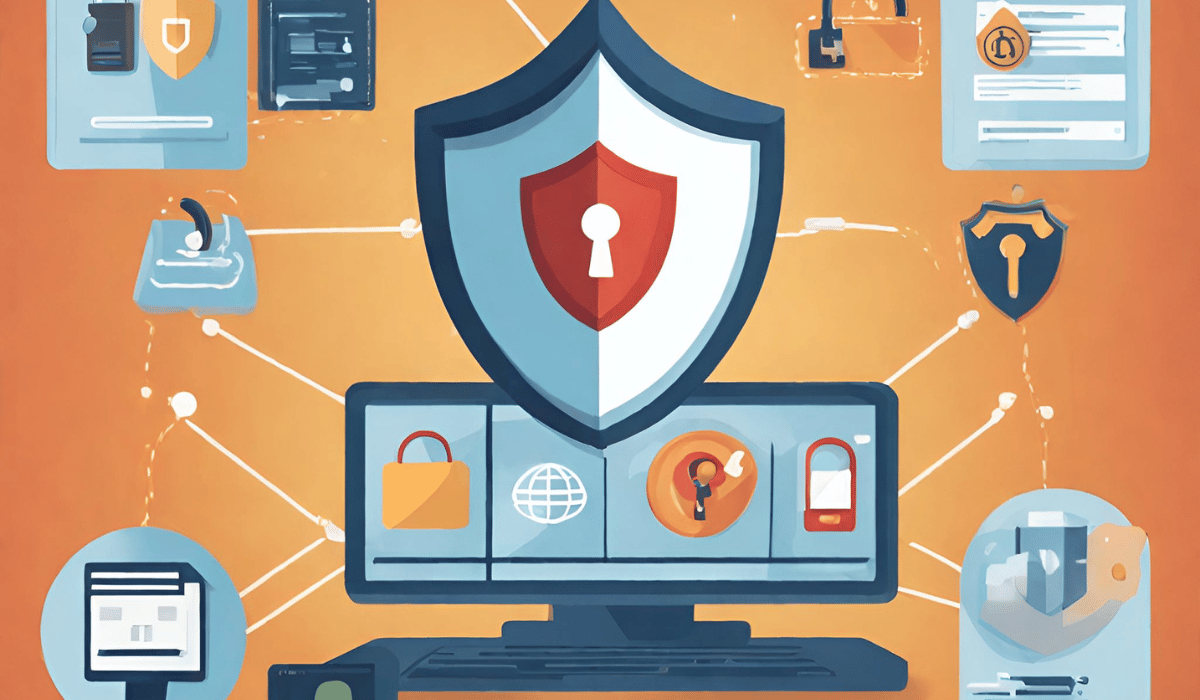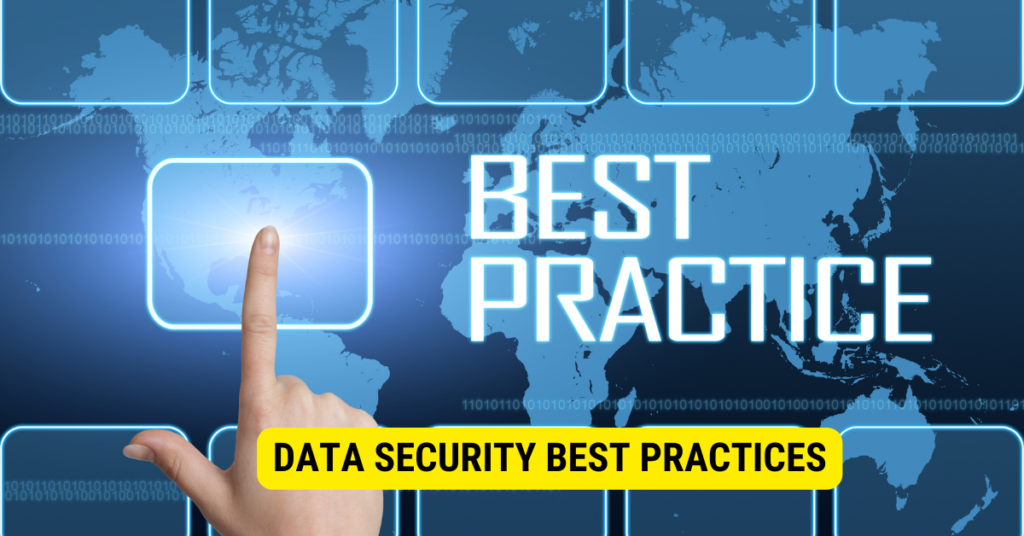The organization or entity that collects, stores, processes, or handles the data is ultimately responsible for securing it. This responsibility includes implementing appropriate security measures, protocols, and best practices to safeguard the data from unauthorized access, breaches, and other potential risks.
In today’s digital age, where data is the lifeblood of businesses, securing sensitive information has become paramount. Cybersecurity breaches can be disastrous, leading to financial losses, reputational damage, and loss of customer trust. As a competent SEO and senior copywriter, I present a comprehensive and detailed article titled “Who is Responsible for Securing Data,” aiming to delve into the critical aspects of data security and empower businesses to take proactive measures to safeguard their valuable data.
Understanding Data Security
What is Data Security?

Data security shields digital information from illegal access, theft, and manipulation. It encompasses a range of practices, technologies, and policies designed to ensure data confidentiality, integrity, and availability. A robust data security strategy is essential to thwart cyber threats and maintain the trust of stakeholders.
The Importance of Data Security
The significance of data security cannot be overstated. In the digital landscape, organizations handle vast amounts of sensitive data, including customer information, financial records, and intellectual property. A breach in data security can lead to severe consequences, including:
- Financial Losses: Data breaches can result in hefty financial penalties, lawsuits, and expenses related to remediation.
- Reputational Damage: A breach tarnishes an organization’s reputation, eroding customer trust and confidence.
- Regulatory Non-Compliance: Non-compliance with data protection regulations can attract severe fines and sanctions.
- Competitive Disadvantage: Businesses that fail to safeguard data may lose their competitive edge as customers seek more secure alternatives.
Key Players Responsible For Securing Data
Data security is a collaborative effort that involves multiple stakeholders working together to create a robust defense against cyber threats. Let’s explore the key players responsible for securing data:
Leadership and Management
Organizational leaders, including executives and senior management, play a dynamic role in setting the tone for data security. They establish policies, allocate resources, and champion a security-first culture within the organization.
IT and Security Teams

IT and security professionals are on the front lines of data security. They implement security measures, conduct risk assessments, monitor network activity, and respond to security incidents promptly.
Employees
Employees are often the feeblest association in data security. Proper training and awareness programs are crucial to educate them about best security practices and potential threats.
Customers and Users
Customers and users must also play a role in data security by following best practices and being vigilant about their data.
Data Security Best Practices

Encryption
Encryption is a fundamental data security measure that converts sensitive information into an unreadable format, rendering it useless to unauthorized individuals. Adopting robust encryption protocols ensures that it remains protected even if data is intercepted.
Access Control
Implementing stringent access controls is essential to restrict data access to authorized personnel. Utilize multi-factor authentication (MFA) and role-based access to limit the exposure of sensitive data.
Regular Audits and Assessments
Conducting periodic security audits and assessments helps identify vulnerabilities and ensures compliance with industry regulations and standards.
Employee Training
Educating employees about cybersecurity threats and best practices can pointedly reduce the risk of human error leading to data breaches.
Data Backups
Regularly backing up data is critical to ensuring data availability and resilience in the face of ransomware attacks or other data loss incidents.
Emerging Trends in Data Security
Artificial Intelligence (AI) and Machine Learning (ML)
AI and ML are increasingly used in data security to detect anomalies, predict threats, and respond to real-time incidents.
Zero Trust Architecture
Zero Trust Architecture assumes that all network access is untrusted until verified, reducing the risk of lateral movement by attackers.
Blockchain Technology
Blockchain offers decentralized and tamper-resistant data storage, which can enhance the security and integrity of critical information.
Key Takeaways
- Data Security is a Collective Responsibility: Securing data is not the sole responsibility of IT teams but requires a collaborative effort from leadership, employees, customers, and users.
- The Significance of Data Security: Data breaches can have severe consequences, including financial losses, reputational damage, and legal implications, making data security a critical priority for businesses.
- Data Security Best Practices: Implementing encryption, access controls, regular audits, employee training, and data backups are essential practices to bolster data security.
- Emerging Trends: Leveraging technologies like AI, ML, and blockchain and adopting Zero Trust Architecture can enhance data security and protection.
- Compliance with Regulations: Adhering to data protection regulations and industry standards is vital to avoid penalties and maintain trust with stakeholders.
- Data Security as a Competitive Advantage: Organizations prioritizing data security gain a competitive edge, as customers value businesses that safeguard their sensitive information.
FAQs
Why is data security crucial for businesses?
Data security is vital for businesses because it protects sensitive information from unauthorized access, theft, or manipulation. A strong data security strategy helps avoid financial losses, reputational damage, and legal consequences that result from data breaches.
Who is responsible for data security in an organization?
Data security is a shared responsibility involving various stakeholders. Leadership sets the tone, IT and security teams implement measures, employees follow best practices, and customers play a role in safeguarding their data.
How can emerging technologies improve data security?
Technologies like AI, ML, and blockchain can enhance data security by detecting threats in real-time, ensuring tamper-resistant data storage, and implementing zero-trust principles for network access.
What are the consequences of a data breach?
Data breaches can lead to financial losses, damage to an organization’s reputation, legal penalties, loss of customer trust, and a competitive disadvantage in the market.
How can businesses stay ahead in data security?
To stay ahead in data security, businesses must adopt the latest security technologies, regularly update security protocols, provide continuous employee training, and foster a security-conscious culture.
How does data security contribute to regulatory compliance?
Data security measures help businesses comply with data protection regulations and industry standards, reducing the risk of fines and penalties due to non-compliance.
Is data security only essential for large enterprises?
No, data security is critical for businesses of all sizes. Small and medium-sized enterprises are also vulnerable to cyber threats and must implement robust security measures to protect their data.
How can customers contribute to data security?
Customers can contribute to data security by following best practices such as using strong passwords, enabling two-factor authentication, and being cautious about sharing personal information online.
What role does employee training play in data security?
Employee training is essential in raising awareness about cybersecurity threats and best practices. Well-informed employees are less likely to fall victim to phishing attacks or other social engineering tactics, reducing the risk of data breaches.
Conclusion
In conclusion, data security is a multifaceted challenge requiring all stakeholders’ collective efforts. By prioritizing data security, organizations can mitigate the risks of cyber threats and build a resilient defense against potential breaches. Implementing best practices, adopting emerging technologies, and fostering a security-conscious culture will empower businesses to stay ahead in the ever-evolving digital landscape.
